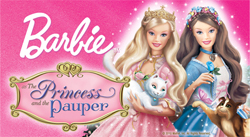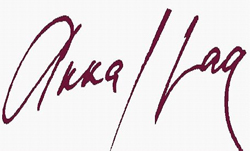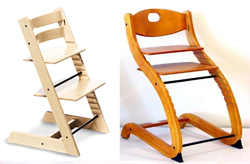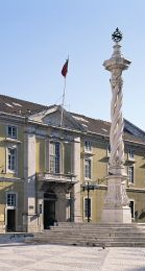 The KluwerCopyrightBlog is part of Kluwer’s IP Law portfolio. Whereas the blog serves as a platform where scholars and practioners can share their informed opinions on specific aspects of IP law and jurisprudence, the related Kluwer Copyright Cases Database aims to accumulate important case law (new and older) in the field of copyright in one database.
The KluwerCopyrightBlog is part of Kluwer’s IP Law portfolio. Whereas the blog serves as a platform where scholars and practioners can share their informed opinions on specific aspects of IP law and jurisprudence, the related Kluwer Copyright Cases Database aims to accumulate important case law (new and older) in the field of copyright in one database.
To satisfy the increasing curiosity about what is happening in the copyright courts of other EU member states, we regularly publish short overviews of cases that were recently added to the database. The selection of this month includes recently submitted cases from Cyprus, Latvia, Norway, Portugal, Bulgaria & Belgium.
 Cyprus: Rebroadcasting Greek TV channel infringes copyright on Barbie-films
Cyprus: Rebroadcasting Greek TV channel infringes copyright on Barbie-films
District Court of Nicosia, 26-01-2012, r. 8050/11 (Sigma Radio TV)
The fact that defendant only rebroadcasted the Greek TV Channel ALTER in Cyprus, without having any editorial control, doesn’t safeguard him against liability for copyright infringement. The case reflects a particularity of the Cypriot radio broadcasting reality where it is common that a TV or radio channel simply rebroadcasts TV programs of a foreign, mainly Greek, TV channel.
Claimant, Sigma Radio TV Public Ltd, one of the major TV channels in Cyprus, had the exclusive right to broadcast Barbie-films in Cyprus, among others ‘Barbie as the princess and the pauper’ and ‘Barbie and the magic of Pegasus’. Claimant was also granted an exclusive license to broadcast thirty Greek films of Finos Films, including ‘Some like it cold.’ The defendant, a Cypriot TV channel, relayed the programming of Greek television channel ALTER in its entirety in Cyprus, including broadcasts of ‘Barbie as the princess and the pauper’ and ‘Some Like It cold’. The defendant was prohibited to modify the programming by its agreement with ALTER.
The District Court of Nicosia rejected the argument of non-control over the rebroadcasted programs. In the opinion of the Court, this is clearly a practical problem which should have been discussed and solved during the negotiations between the defendant and ALTER before entering into any agreement for cooperation. It is unthinkable and irresponsible to broadcast a TV program while ignoring its content. This irresponsible behaviour lurks many dangers that are not limited to matters of copyright only, but also concerns other legal issues, for example with regard to broadcasting TV programs at an improper time or of an improper nature. Case submitted by Tatiana-Eleni Synodinou, Assistant professor, Law Department, University of Cyprus.
 Latvia: Collective management & the amount of remuneration
Latvia: Collective management & the amount of remuneration
Supreme Court of the Republic of Latvia, 21 May 2014, C04256408 (AKKA/LAA vs LTV)
In the last 15 years, the collective management organisation AKKA/LAA has had legal disputes with all major radio and television organisations in Latvia. Where previous judgments were more in favour of the users, this judgment marks a change towards acknowledging the special role and functions of collective management organisations.
In this case, AKKA/LAA stated that LTV, a state owned television company had violated its copyrights by using musical works in its programs without paying for them in full from 2005 till 2008. LTV brought a counterclaim, asking the court to recognise the 2005 licensing agreement between the parties.
The court of appeal satisfied both the claim and the counterclaim in part. The court recognised that there was a licensing agreement concluded between the parties in 2005 as AKKA/LAA and the Association of Latvian Broadcasting Organisations were negotiating on a standard licensing agreement for all broadcasting organisations in Latvia. When setting the amount of license fee, the court followed the tariffs of AKKA/LAA and ruled that LTV had to pay remuneration to AKKA/LAA of 1,5 % from the television company´s income.
The court ruled that in a situation where a collective management organisation grants copyright to use its repertoire and the parties cannot agree on the amount of remuneration, Sec. 41(3) Copyright Law is applicable: in case of a dispute, the amount of remuneration shall be determined pursuant to the discretion of the court. Under Article 5 of Civil Law the judge shall decide the matter in accordance with a sense of justice and the general principles of law. This means that a judge shall not only set the amount of remuneration, but has to substantiate its fairness based on rational legal arguments as well.
As a representative of authors, a collective management organisation shall have the right to determine the licence fees. This leads to equality among different users. However, as it follows from Sec. 41 (1) Copyright Law, which lays down the principle of negotiations, these fees are not binding and shall be considered as a mere proposal. Case submitted by Magda Papēde, Albert Ludwig University, Freiburg.
 Norway: Is the Tripp Trapp-chair a work?
Norway: Is the Tripp Trapp-chair a work?
Supreme Court of Norway, 27-07-2012, 2011/2020 (Tripp Trapp vs. Trumf)
The Supreme Court of Norway ruled that the Tripp Trapp chair, designed by Peter Opsvik, is a work protected by copyright and concluded that defendant’s (Trumf AS) chair Oliver infringed Opsviks copyright.
The Tripp Trapp chair has a special design, an L-shape, to be able to skip the hind legs and have it lean on the bottom of the L-form. The chair also has a movable foot board, to adjust it when the child grows taller. The arrangement of the foot board was patented from 1972 until 1992 (when the patent expired). After the expiration of the patent, plenty of other children chairs with adjustable foot boards have been produced. Stokke claimed that many of these productions infringed Opsviks copyright, and several of the incidents were brought to court.
Trumf, the producer of the ‘Oliver’-chair claimed that the Appeal Court had approved copyright protection for ideas, by granting copyright protection for the Tripp Trapp-chair. The L-form and the foot board that were copied in the Oliver-chair were a result of the function of the chair, not a way the copyright holder had chosen to express the idea.
The Supreme Court stated that applied art-products can be protected by copyright as long as the form – seen in its totality- is a work. The form must be a result of someone’s intellectual creativity and must have reached the level of “work height” (originality). The ideas must have been realised in the product in a way that the demand for “own intellectual creativity” is fulfilled, and the item must have gotten an artistic value, the Court stated. The judge further expressed that he was unsure whether one could say that there is a stricter norm for protection of products of applied art, or that this statement is based on the fact that there are less options for variation due to the functional demands.
The Court’s statement on the relevance of EU-cases can be questioned. Even though there’s not a specific EU-directive on applied art, as the Court stated, the Infosoc-directive (2001/29/EF) is a horizontal directive, also applicable for applied art. The ECJ stated in the Infopaq case (C-5/08, premise 27), that the ECJ had the competence – when the EU law had not given the national courts such mandate – to interpret the copyright directives, also regarding terms that where not defined. The ECJ therefore has the mandate – not the national courts – to decide the criteria for “originality”, which they have done in several cases. The Norwegian Supreme Court is bound to follow these ECJ- rulings and their definition of ‘work’ and ‘originality’. The ECJ also stated, in the Painer-case, that the scope of copyright protection is similar for works with high or low degree of originality. This is contradictory to what the Norwegian Supreme Court’s stated in the Tripp Trapp-case. Case submitted by Irina Eidsvold Tøien, Norwegian Research Center for Computers and Law, University of Oslo.
 Portugal: Software copyright and interim measures
Portugal: Software copyright and interim measures
Court of Appeal of Lisbon, 16-01-2014, 113/13.9YHLSB-A.L1-6 (Software copyright and interim measures)
Under Portuguese law, copyright on software made for hire belongs to the employer or the client, unless parties agree otherwise or when it is inferred from the purpose of the contract. In order to issue provisional interim measures for copyright infringements, the Court has to apply the principle of proportionality, meaning that a strong imbalance between the damage suffered by the defendant and the advantage gained by the claimant is required. A slight imbalance is not enough.
The defendants in this case argued that the computer software had not been developed under a tailor-made contract and that it rather regarded a license for the use of pre-existing software, delivered and installed as it was and to be used against monthly fees. Moreover, the formalities for copyright assignment had not been complied with. Consequently, under Portuguese law, the claimant had not acquired ownership of the copyright on the software, which belonged to the defendants, which therefore should remain free to use the software.
The Court found that the system had been developed upon pre-existing software, but that it had nonetheless been adapted and evolved according to the directions of the customer, so that new software had been developed for the customer. Therefore the copyright in the new program belongs to the customer: the Software Copyright Act establishes a rule of works made for hire in the field of software (and databases), which is different from the general solution provided for by the Copyright Act. It means that, for purposes of the interim measures, there is enough fumus bonum iuris.
This solution is strange to traditional Portuguese copyright law. It implements the European copyright directive and is specific for software and databases. The Court does not enter in detail about the originality of the derivative software, but that is certainly a requirement. The question at issue is limited to the existence of bonus fumus iuris for purposes of issuing interim provisional measures. On the other hand, the Court submits the application of these measures to the principle of proportionality, which has to be taken into consideration also in the field of copyright infringements, the burden of proof being upon the party arguing this principle. Case submitted by Karina Correa Pereira, Law Faculty of Coimbra University.
 Bulgaria: Written or verbal consent?
Bulgaria: Written or verbal consent?
Sofia Appellate Court,18-10-2013, Commercial Chamber, 5th Panel, judgment no. 1903, commercial case No. 4662 of 2012 (Koketka)
The right to publish (reproduce) and distribute a copyright protected work in a collection of works may be granted in written form only, by concluding a publishing agreement. The exemption from copyright for the use of an insignificant number of works in other works, is applicable only when all conditions are cumulatively met, i.e. the work(s) are used in analysis, commentaries or another scientific research for educational or scientific purposes.
G.A.A. is the author of the lyrics and music of the song Koketka. The song was included in a collection of songs and music games for children in kindergarten, which was published in 2006 by the defendant. The collection was approved by the Ministry of Education as a notebook for music lessons at kindergartens. The first instance court found that there was no copyright infringement because the author had given her consent to use the work in a verbal form and further, even if there was no consent, an exemption from copyright would have been applicable.
The appellate court qualified the defendant as a publisher of the music and lyrics of the song Koketka and concluded that the defendant should have concluded a written agreement with the author G.A.A (Art. 43 of the Law on Copyright and Relates Rights provides that the written form is a form for validity of the publication agreement). The court also concluded that the work was not published for analytical, scientific or commentary purposes. Therefore, despite the fact that the book was published for educational purposes, one of the elements for application of the referenced exemption was not met and hence, Art. 23, para. 1, item 3 of the law was not applicable. Case submitted by Teodora Tsenova, Djingov, Gouginski, Kyutchukov & Velichkov, Sofia.
 Belgium: The requirement of originality
Belgium: The requirement of originality
Supreme Court of Belgium, 31-10-2013, C.12.0263.N/1 (M-Design Benelux SPRL v. Geoffrey Bontemps SPRL)
The Belgian Supreme Court reverses its previous jurisprudence on the requirement of originality with regard to copyright in a case concerning the copyright protection of certain types of fireplaces and stoves.
In its judgment of January 26, 2012, the Belgian Court of Cassation held that a work didn’t need to reflect the personality of the author to be seen as original and, therefore, to be protected by copyright. Based on this ruling, the Brussels’ Court of Appeal rejected the arguments of appellant.
The appellant in Cassation, as well as the Advocate General in his conclusions, noted that this ruling was contrary the judgment of the Court of Justice of the European Union in case C-145/10 (Painer) and the Belgian doctrine. Following these case law and opinion, a literary and artistic work can be protected by copyright if such a work is an intellectual creation of the author reflecting his personality and expressing his free and creative choices in the production of that work. The Court of Cassation applied the Painer- jurisprudence and quashed the decision of the Brussels’ Court of Appeal without further explanation. Case submitted by Philippe & Partners, Liège.
A full summary of each case can be found on Kluwer IP Law
________________________
To make sure you do not miss out on regular updates from the Kluwer Copyright Blog, please subscribe here.


